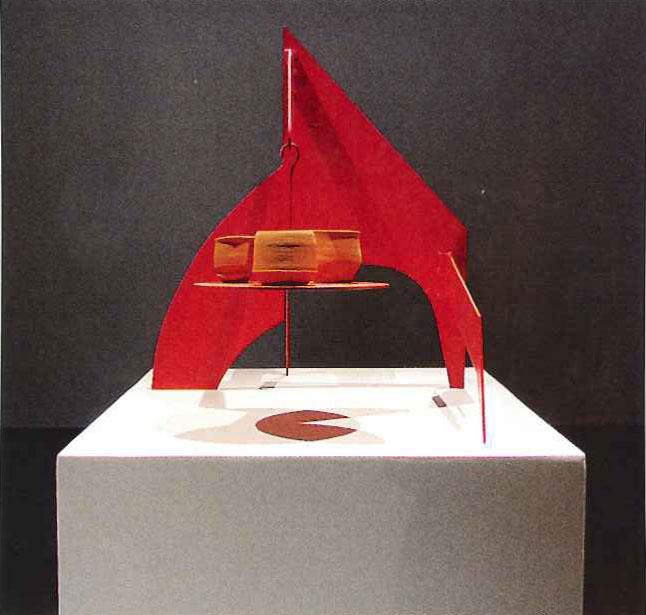Contemporary Art Gallery, Vancouver
The Vancouver-based artist Damian Moppett recently set himself the task of learning the craft of pottery. Over the past year, he has thrown and fired dozens of bowls and other ceramic vessels. The amateur wares (some betraying the most elementary trials with thick or sunken curves, others evocative of Isamu Noguchi’s abstract sculptures) were shown at the Contemporary Art Gallery as part of the artist’s exhibition “The Visible Work.”
Finely balanced on painted steel sculptural supports constructed to mimic Alexander Calder’s mobiles and stabiles, the works are dramatically lit, and cast abstract shadows on the floor and surrounding walls. In the sense of how the works are displayed (made visible), Moppett’s project reveals itself to be a meticulous stagecraft in which the history of modernism is rehearsed with alternative endings.
Turning modernist icons into supports, pedestals or some kind of prop for the display of amateur pottery upends traditional hierarchies between art and craft. But this operation cannot be reduced to an act of ironic reversal. Rather, the museum-like display of modernist sculpture depends on the stabilizing force of elemental ceramic vessels. The exhibition becomes a kind of spotlit stage upon which the utility of craft and the aesthetic autonomy of abstraction are bound together in dramatic tension.
A second gallery space introduces a related scenario. Here, a three-monitor video display, with each monitor showing the artist tuning a different instrument, emphasizes rehearsal and preparation. Surrounding the installation are scatters of meticulously executed drawings and watercolours that reference the history of Moppett’s art practice. Scenes of rustic West Coast island living and makeshift spaces of art and music production alternate with representational works as well as portraits from successive generations of artists who have complicated the legacy of modernism: Cy Twombly, Philip Guston, Mike Kelley, Peter Fischli and David Weiss. They trace a varied tradition of art-making that mixes or muddies abstract forms with literal, popular, mundane or scatological references. The singular abstract forms that Moppett so often evokes and which are suggestive of an elusive modernist ideal of autonomy or self-sufficiency are given a history and linked to the motivations of an artisan, rocker or craftsman.
Moppett’s work signals the search for a critique of autonomy through practice and performance. As such, it meticulously questions ongoing compulsions to rehearse abstract forms.
This review is from the Summer 2005 issue of Canadian Art.

 Damian Moppett, Untitled (Stabile A), 2005, Courtesy Catriona Jeffries Gallery
Damian Moppett, Untitled (Stabile A), 2005, Courtesy Catriona Jeffries Gallery







